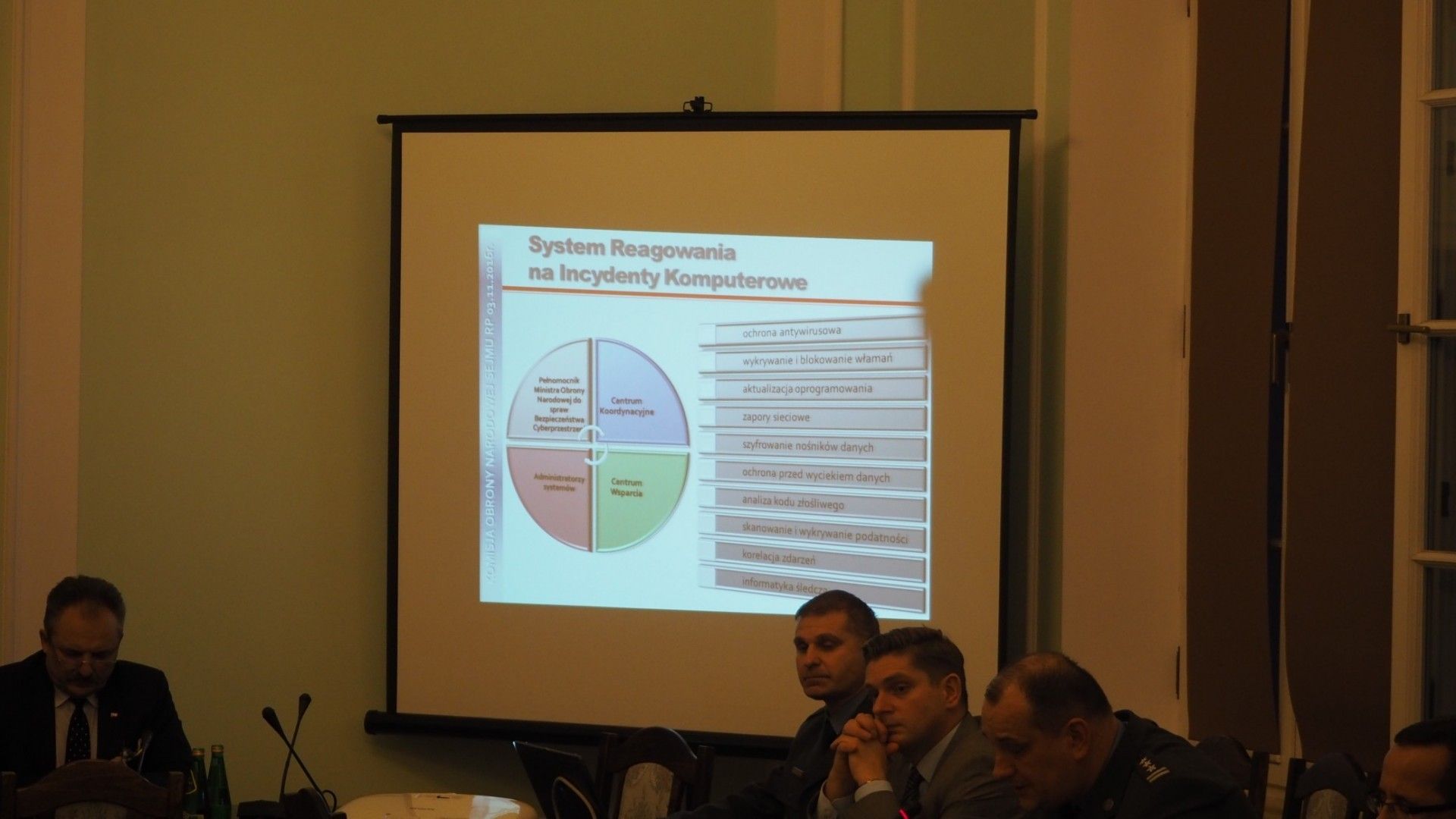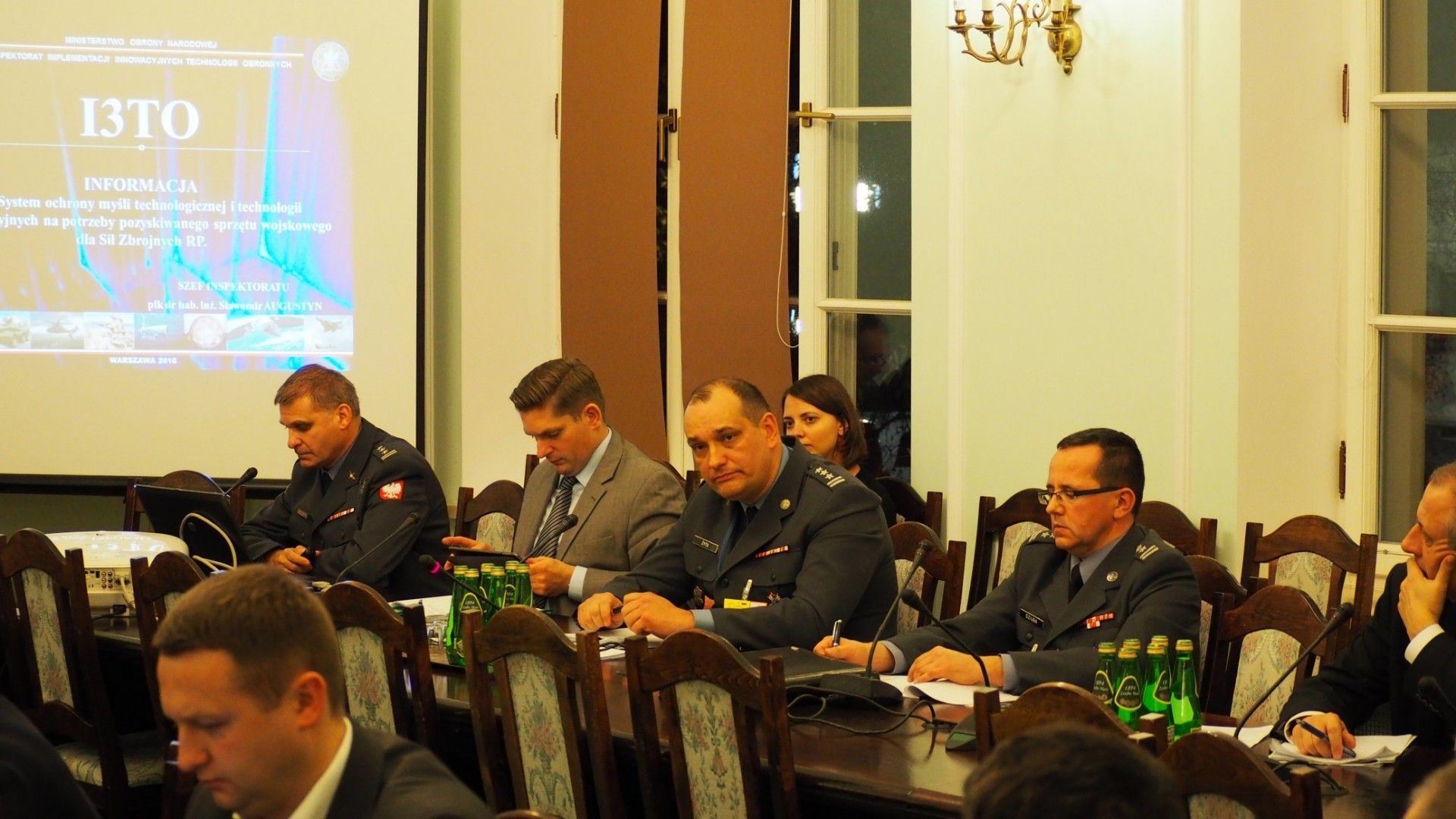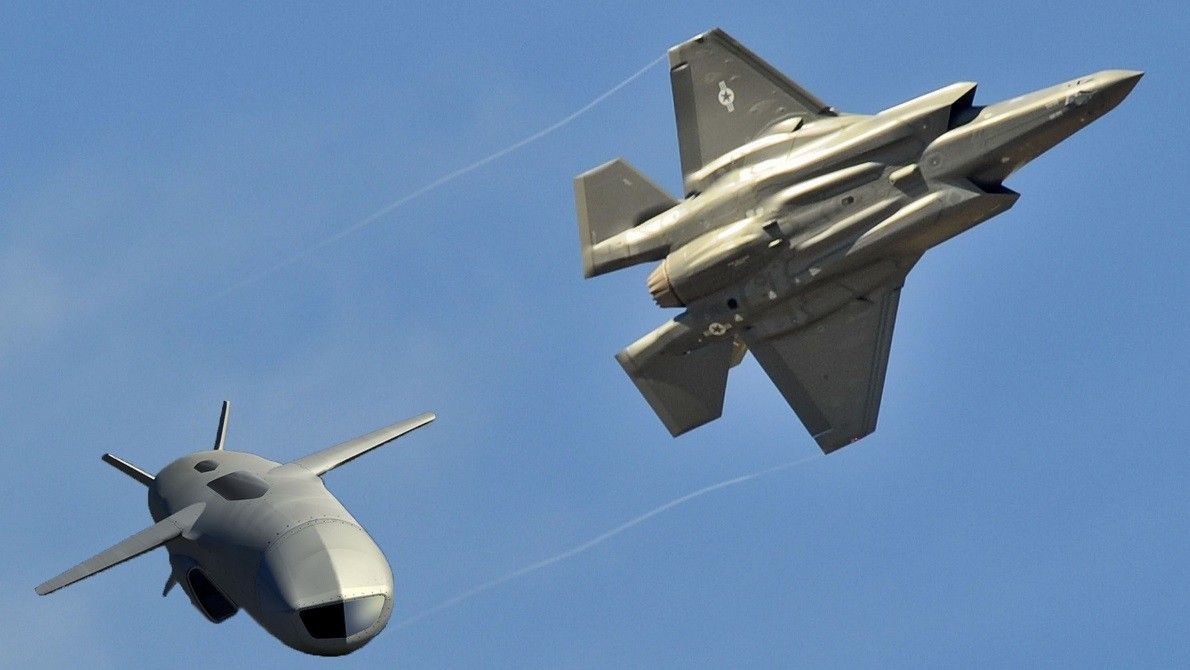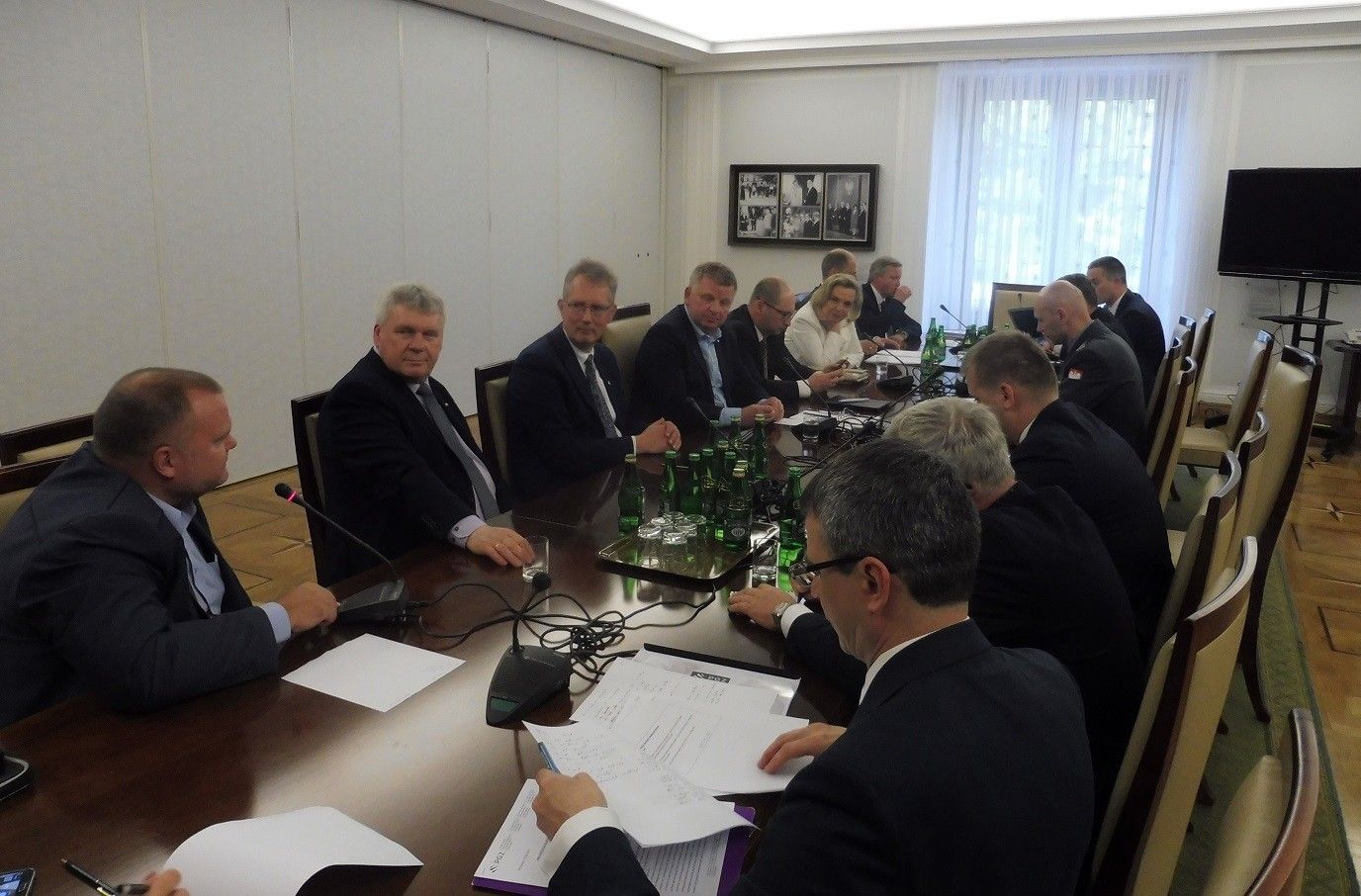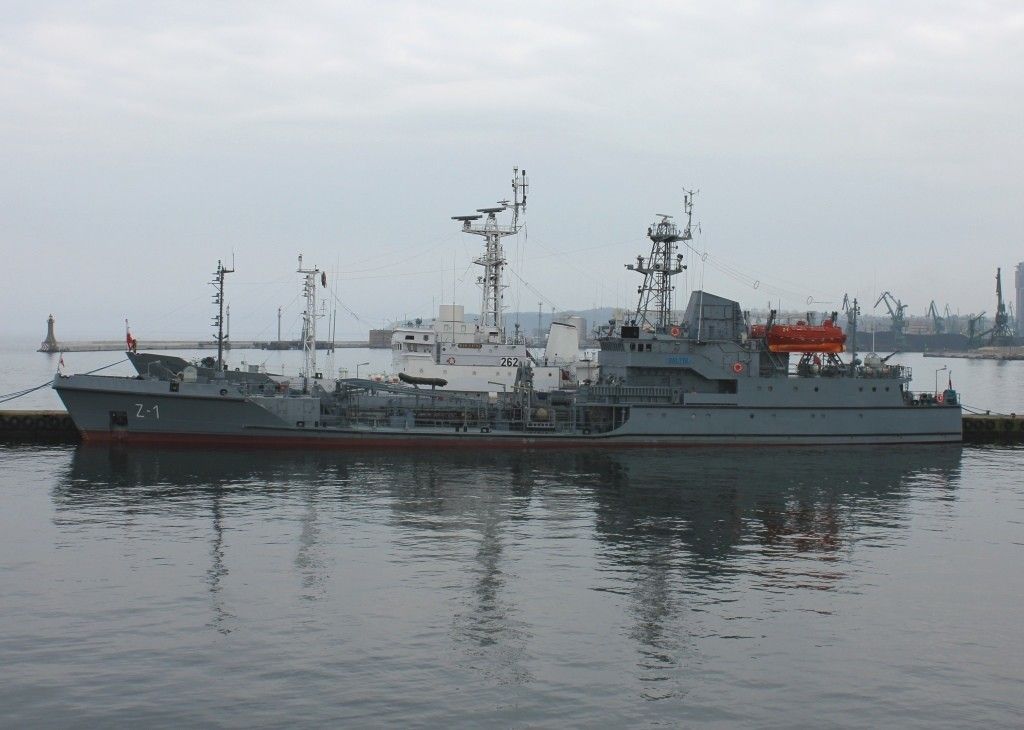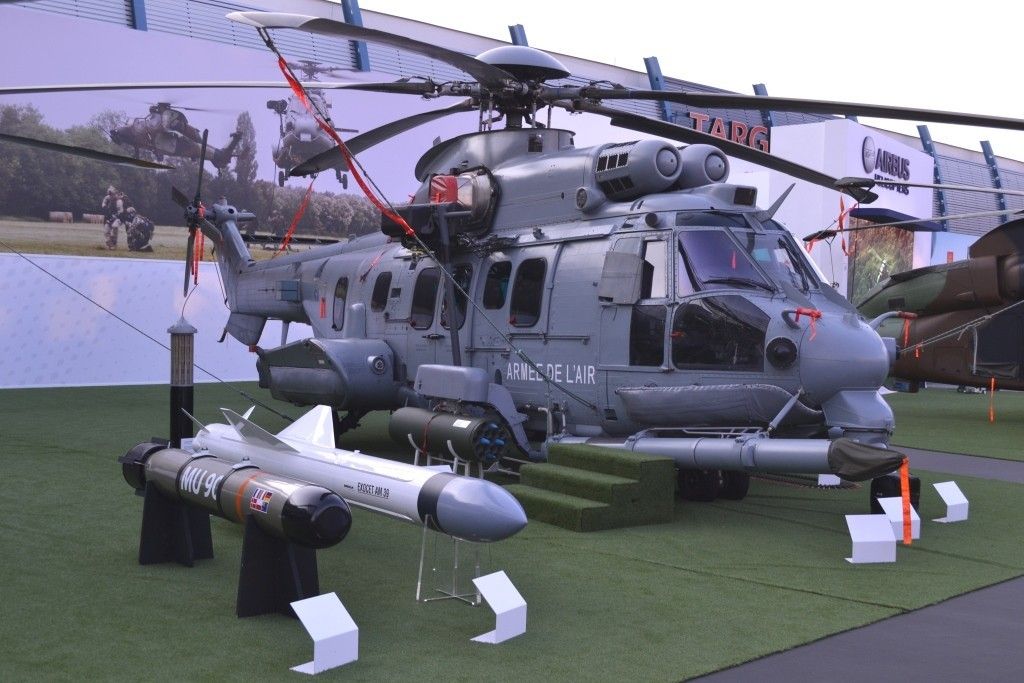Industry
Poland May Create Its Own Mobile Anti-Aircraft System
The prospective Polish anti-aircraft system is to consist of three layers, including the Wisła medium-range systems, Narew SHORAD systems and VSHORAD systems, capable of attacking targets at distances of up to 5-6.5 kilometres. The above structure includes a range gap though, between the VSHORAD and SHORAD layers, especially when it comes to protection of mobile and mechanized units. Solutions within the aforesaid scope may be easily delivered by the domestic industry, however the development work shall be undertaken early enough to fill in the gap quickly.
When the concept of the Polish multi-layered air defence system was being created, the main point of focus was to create a range and altitude division. In this way, the procurement plans were classified and divided. It was hence assumed that the systems capable of attacking airborne targets at distances of up to 100-120 kilometres and at altitudes of up to 20 kilometres would be seen as the top layer and qualified as medium range systems, they are referred to as the Wisła systems.
It has also been arranged that short range systems would operate below, acting against airborne targets at distances of up to 25-30 kilometres and altitudes of up to 10 kilometres – referred to as Narew. The bottom layer was to include VSHORAD systems and mobile solutions (Poprad), based upon MANPADS class missiles such as Grom and Piorun, complemented with 23 mm artillery, destined to be used to provide direct cover for the airbases.
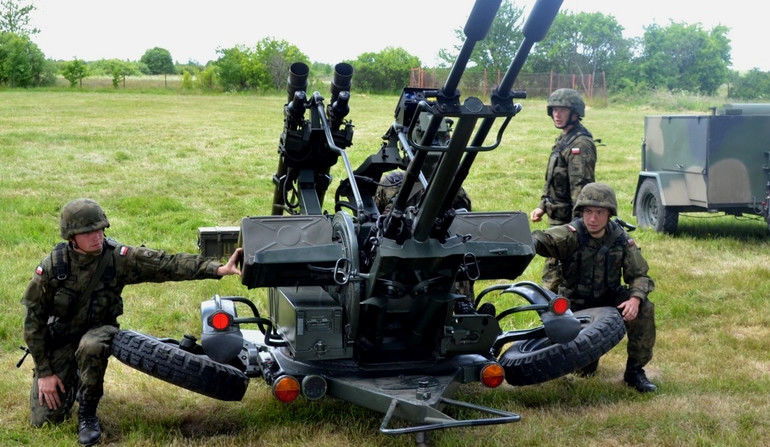
At the same time, a theoretical “gap-filling table” has been created, assuming that Wisła systems would replace the following: S-75M SAM systems withdrawn from the air defence component back in 2001, and 2K11 Krug SAM systems withdrawn from the land forces back in the year 2007. Narew batteries were to act as natural successors of the following systems: Newa-SC (Air Force) and Kub and Osa-AK (Land Forces).
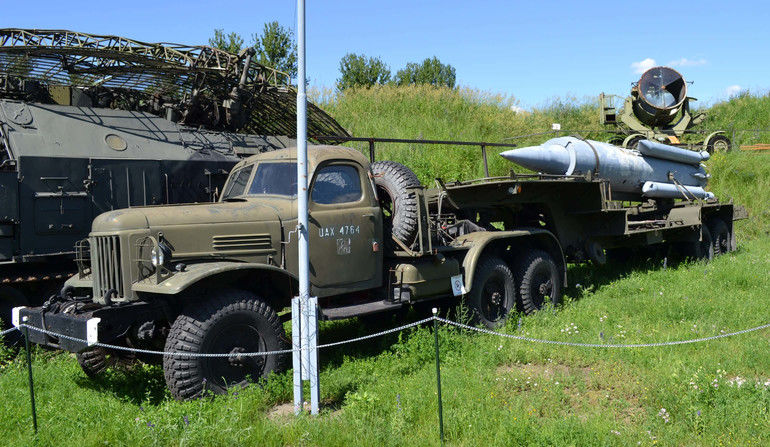
This organizational structure is reflected within the most important of the operational programmes: “Air Defence System”. However, the assumptions that have been developed and drafted a few years back do not take fully into account the need to replace the anti-aircraft systems that are destined to be used by the Land Forces directly. At the moment Osa-AK system plays this role within the structure of the Polish Armed Forces (with its range of up to 10 kilometers), along with the Biała system (range of around 5 kilometers, assuming its ability to use the Grom missiles).
Close cover of the land forces shall also be based upon autonomous launchers, in case of which both sensors (for detection and tracking), as well as effectors (missiles, cannons), are placed on a common carrier. This makes it possible for such system to be operated autonomously, even on the move, and even when communication would be interrupted between the air-defence battery vehicles and the command, in scenario in which there is a need to act against a direct strike on own positions or on a convoy on the move.
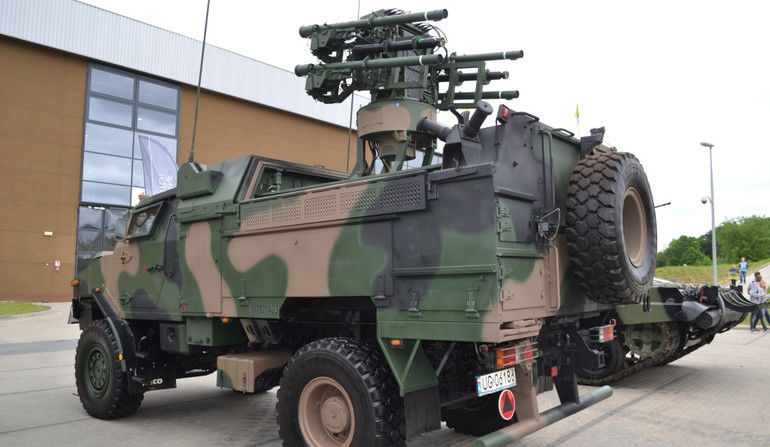
When the Poprad mobile VSHORAD systems were being created, an assumption has been made that the said system would utilize MANPADS-class missiles with a range of 5-6.5 kilometres, capable of striking targets at altitudes of 3.5 – 4 kilometres (assuming that Piorun missiles would be used here). Introduction of the Poprad systems would constitute a significant enhancement of capabilities of the Army’s air defence elements, also in case of the mechanized brigades operating the Rosomak APC. Using the MANPADS on a mobile platform is a commonly applied solution, e.g. in case of the US Stinger missile. Automated and light systems would act, primarily, as the replacement of the 23 mm AAA systems based upon the Star trucks, within the VSHORAD squadrons, complementing, in a relevant manner, their combat capabilities.

Poprad systems, with the currently applied armament, may be seen as a replacement for the Osa system, with a range of 10 kilometres at altitudes of up to 5 kilometres, thus there is a requirement to have them complemented in the future. Osa systems, at the moment, within the Polish structure, are placed in the division-level air-defence regiments, similarly as the Kub systems.
Wisła and Narew systems, in their designed form, would provide protection of stationary objects and fixed bases. However, the units on the move, following the withdrawal of the Osa system, would not receive adequate protection at distances of 7 to 10 kilometres. The Polish Army may be affected by lack of tracked-chassis air defence systems, as Shilka/Biała suites will have to be, ultimately, withdrawn, even despite the modernization efforts. Not only does the gap occur in the effector range, as mobility is also as important factor.
Successors of the Osa/Biała Systems
At the moment, the representatives of the Polish Armed Forces are departing from perceiving the Narew system as a replacement of the Osa solution. Acquiring equipment of similar class, initially, was not being foreseen within the “Air Defence System” operational programme. Some of the opinionmakers claim that earlier implementation of the Osa-AK system was caused by development of offensive capabilities (which entails, among other issues, the amphibious capabilities of the platforms that carry the air defence systems).
Military and civil experts also point out the fact that Narew batteries do not necessarily have to replace the Osa-AK systems, since, theoretically, they are classified as VSHORAD class systems. Poprad and Pilica batteries are also included in this category, hence some of the experts assumed that continuity is maintained within this class. However, assuming the stance above, a range gap would emerge in the Polish IADS, while the military units on the move would not have sufficient air defence assets at their disposal.
VSHORAD class systems manufactured in Poland (Poprad) and based on the Grom (and Piorun - in the future) missiles will have an ability to destroy airborne targets at altitudes of up to 3.5-4 kilometers and distances of up to 5-6.5 kilometers. The goal of introducing such systems, as mentioned above, was to reinforce the direct cover, currently based on 23 mm AAA systems or MANPADS.

On the other hand, the proper replacement of the Osa-AK system is to protect an area within a radius of up to 10 kilometres and at altitudes of up to 5000 meters. Similar limitations would emerge within the scope of the system’s mobility. Considering the fact that the operational units, armoured and mechanized units in particular, are on the move continuously, they require their escort to be based on a platform that would remain capable of accompanying such units on the battlefield.
In rough terrain present in Poland, no chance exists to use pre-positioned anti-aircraft batteries to fully secure the military transport operations taking place on the roads and via the railway networks. Movement in the frontline region or border region would be especially dangerous, since the attacking enemy aircraft can operate over their own territory there.
Attack aircraft and helicopters would also be dangerous, flying at low altitudes and following the terrain they would stand a chance to avoid the higher-level air-defence systems. If the mechanized units are accompanied by organic anti-aircraft systems, the threat posed by the low-flying airborne assets may be limited. The threat at higher altitudes would be dealt with by the Wisła and Narew systems.
Dangers involved within the “up to 10 kilometres” range
The difference between the radius of the area protected by the Osa-AK systems and the newly introduced Poprad and Pilica solutions is minor, at less than 5 kilometres. Even at so short distances, the potential enemy has an ability to directly (line of sight) attack our Polish forces, outside the range of the Polish direct-protection air defence systems.
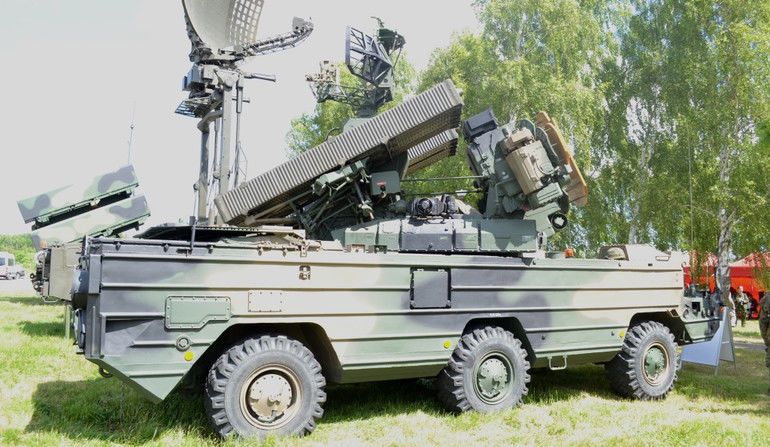
The military authorities of Russia are well aware of the threat posed by the MANPADS systems (Afghan lessons-learned), and they equip the helicopters in a way that would provide them with an ability to attack their targets at distances exceeding the safe margin of 6 kilometres.
Russian attack helicopters, including the Mi-28N, Mi-35 and Ka-52 platforms utilize the 9M120 “Ataka” missiles, the range of which is officially defined as 6 to 8 kilometres. The said missiles would allow the Russian gunships to hover at low altitude and safely attack the targets placed within 3 kilometres from the frontline. Moreover, some information has emerged concerning the potential introduction of the “Ataka-D” missile (9M120D), with a range of 10 kilometres. Ka-50 and Ka-52 attack helicopters may also carry the 9K121 “Vikhr” ATGM (NATO codename: AT-16 Scallion), with a range of up to 10 kilometres.

2K22 Tunguska and 9K322 Tor-M2 systems have been designed in Russia to act against this type of threat. The Swiss have developed the ADATS system, while the British have created the Starstreak solution. ADATS is a system developed by the Swiss Oerlikon-Contraves company belonging to the German Rheinmetall group. It is a system carrying 8 missiles, with a range of around 10 kilometres, that can be effectively used against targets flying at altitudes of up to 7000 meters. The target detection is provided by an observation radar, meanwhile tracking is secured by a daytime-night capable optronic sensor.
ADATS system has been withdrawn from service in Canada (for whom it was initially designed) due to budgetary cuts, however, no successor has been introduced as of now. A similar situation occurred in case of the mobile air-defence systems in other western states, since they did not expect that major threats would be posed by the enemy airborne assets, towards own forces.
Following the outbreak of the Ukrainian conflict the situation above has changed. Even the US Army is willing to reacquire the ability to protect its mobile units. The Avenger systems based on a 4x4 vehicle do not provide a proper protection, e.g. for the armoured elements. The plan to rapidly introduce new capabilities is visible within the budgetary documents in the US as of now. Recently, Boeing has presented a Stryker IFV featuring a multi-purpose missile launcher based upon the Avenger design, capable of using Stinger, Hellfire and Sidewinder missiles (the Sidewinder missile has a range greater than the Stinger).

On the other hand, in case of the Starstreak High Velocity Missile (HVM) systems developed by Thales we are dealing with a solution that is much more universal. The main design goal here was to create a modular air defence system which, once properly reconfigured (sensor-wise), may be installed on any platform. Starstreak II missiles have a range defined as “more than 7 kilometres”, thus exceeding the capabilities of any MANPADS.
Tunguska, on the other hand, is the Russian missile-artillery anti-aircraft system based on a tracked chassis. Two twin-barrel 2A38M 30 mm automatic cannons allow for destruction of airborne targets at distances of up to 4 kilometres (at least theoretically). In case when one of the 8 9M311 missiles is used, the range goes up to 8 kilometres, meanwhile the modernized variant is to have a range of up to 10 kilometres.
Tor-M2 is yet another Russian mobile tracked missile system armed with 8 vertically launched missiles, with a maximum range of up to 12 kilometres. The new 9M338 missiles introduced for this system by the Russians are to be capable of attacking targets at distances of 16 kilometres.
Polish Response to Airborne Threats
Polish Defence Industry, including the companies gathered within the PGZ Group, remains in possession of competencies to independently develop and manufacture both the successors of the Osa-AK, as well as of the ZSU-23-4 and ZSU-23-4MP Biała solutions. The said abilities have been created during the previously cancelled Loara programme, projects related to the VSHORAD systems (Poprad, Piorun, Pilica) and the works related to air defence systems C4ISR support.
The systems as such feature five important elements (missiles, cannons, detection and guidance system, command and communications system and the vehicle itself), all of which remain within reach of the Polish research and industrial entities. As mentioned before, most of the aforesaid elements has been developed within the framework of other programmes, leaving the issue of proper adaptation to be resolved now.
Considering the miniaturization, the work may be implemented, assuming that an armament module would be created with an ability of being reconfigured, with a proper type of ordnance being selected, and then such module can be placed on any chassis or within any container, along with the selected sensor suite. This approach has been adopted by Thales, when the Starstreak system was being developed.
A similar path has been also taken by the Russians in case of the Tor-M2KM systems. The aforesaid solution has been developed as an autonomous combat module (avtonomniy boyeviy modul), weighing 15 tonnes. The said module may be placed on any platform that would be strong enough to carry it. Thanks to the above, the system could have been offered to India, on the Tata 3138C 8x8 platform. There was also an option to place it on a trailer for tracked carrier - the DT-30PM - in case of the anti-aircraft system offered for the Arctic units.
Development, derived from the existing Russian systems, is well exemplified also in case of the individual naval versions of the missile-artillery Kashtan anti-aircraft solutions, as well as in the Pancyr-S1 land based SHORAD system. In the latter case, the Russians have created a combat module with the cannons (2A38M) identical with the ones utilized in case of the Tunguska vehicular platform, fused with the solutions derived from the naval CIWS weaponry, such as Kashtan or Kortik.

The module was autonomous enough to become an important element of the Russian anti-aircraft system, as it could, for instance, be used to protect the S-300 and S-400 medium and long range SAM batteries. Whereas Pantsir-S1 secures direct protection of the deployed battery, it may also be used to secure road and railway transport operations.

A similar way may be used to solve the Polish problems related to the process in which successors would be selected for the Osa-AK and Biała solutions. The work may be based upon the existing results of the Loara, Blenda, Bystra, Poprad, Pilica, Grom/Piorun, Biała programmes, as well as the expertise gathered through modernization of the Osa-AK platform. The listed programmes were, in their majority, pursued with collaboration seen on the part of a number of companies that are now gathered within the PGZ Group.
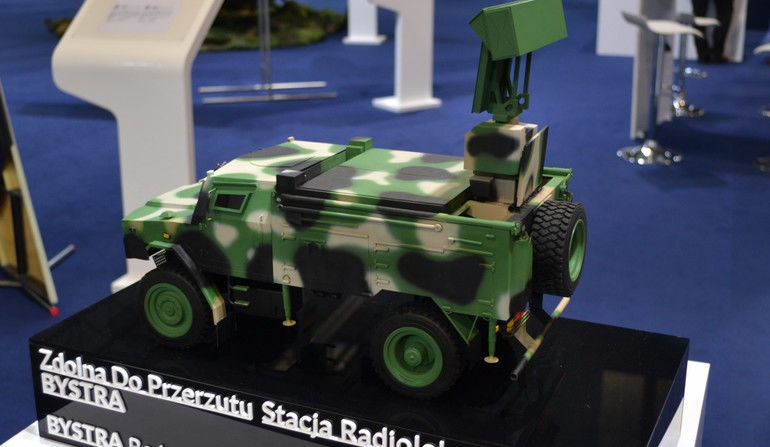
Creating a Polish Anti-Aircraft Missile is Possible
The only element of the system that, at the moment, does not exist is the anti-aircraft missile the maximum range of which would be placed at the level of 10 kilometers. This does not mean that the industry would be forced to start the work from a scratch. The R&D process may be founded upon the Grom and, above all, Piorun MANPADS. The latter missiles belong to a new generation, with a new thermal seeker, proximity fuse and guidance unit, thus the derived solutions may also be utilized in new projects.
On the basis of the aforesaid experience Polish R&D facilities and enterprises (Military University of Technology, Telesystem-Mesko Implementation and Development Centre, along with the Mesko S.A. company, belonging to the Polish Armaments Group) have begun, on their own, to work on a new anti-aircraft missile, with a working name of PK-6. The said missiles could expand the range of the Poprad system, also becoming a building block for creating the Osa-AK missile system replacements.
Development of the PK-6 Anti-Aircraft Missile could be easier than the process related to Grom and Piorun weapons, as the existing technologies may be used for this purpose. The Polish designers are not limited with size or weight constraints concerning the missiles, applicable in case of MANPADS. They could transfer the Piorun technology into a larger body, complementing it with the required components.
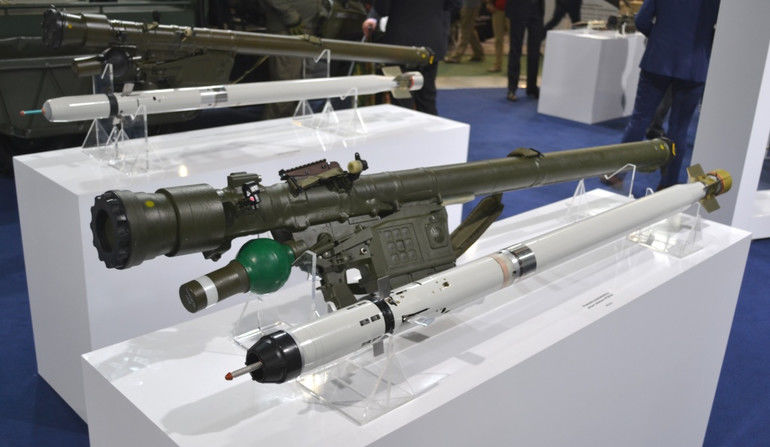
Not only would such steps be beneficial for the military, as this would bring merit for the Polish industry too. The initial calculations show that the Polish Armed Forces would need even couple thousand of short/very short range missiles (for acting against targets at distances of up to 10-12 kilometres). Moreover, one should remember that virtually all of the NATO member states, including the United States, have resigned from owning highly mobile anti-aircraft systems. Some of the NATO member states, considering the dynamic geopolitical environment, could be potentially interested in obtaining the Polish solution.
Polish Fire Control System and 35 mm Cannon – Already Available
Ability to develop the successors for the Osa-AK and Biała systems is very much dependent on the option to make use of readily available target acquisition and fire control systems. Moreover, there is also an option to select out of a couple solutions, when it comes to the optoelectronic sensor suites. Here one should also mention the PZA Loara mobile AAA system that has been developed in Poland and, for a short period of time, was a part of the inventory of the 10th Air Cavalry Brigade.
The aforesaid platform was used to carry and verify the operation of a comprehensive subsystem for preliminary target detection, coupled with a tracking subsystem. In the former case, a Polish 3D radar with a rotating curtain array antenna with electronically-shaped beam has been used. The radar is stabilized in two dimensions and it has been integrated with a domestically created IFF system. The tracking subsystem is placed in the front part of the turret and consists of the Eagle Mk II Swedish K-band (35 GHz) radar, and optronic sensor suite based on the SAGEM IR thermal vision and KTVD-1 TV camera. The whole system is complemented with a laser rangefinder.
When it comes to the optronic tracking units, not only are the Loara-derived systems available, as other observation and tracking suites developed separately by PCO, PIT-Radwar and Grudziądz-based Military Armament Works can also be utilized, here we are referring to the solutions developed for the purpose of being applied in case of the Blenda AAA fire control system, 35 mm AG-35 cannon, Pilica 23 mm AAA system, Poprad anti-aircraft system and modernized Osa-AK launchers.
Moreover, ready-made solution exists when it comes to the artillery assets (the cannon) as 35 mm KDA automatic cannon is being license manufactured and developed in Poland, with the license having been acquired from the Oerlikon Contraves company. The license has been acquired during the work on a mobile PZA Loara AAA system. The work has been covered with an amount of PLN 300 million. On the basis of the aforesaid solution, PIT-RADWAR has been working on systems destined to be used both by the Army, as well as by the Navy.
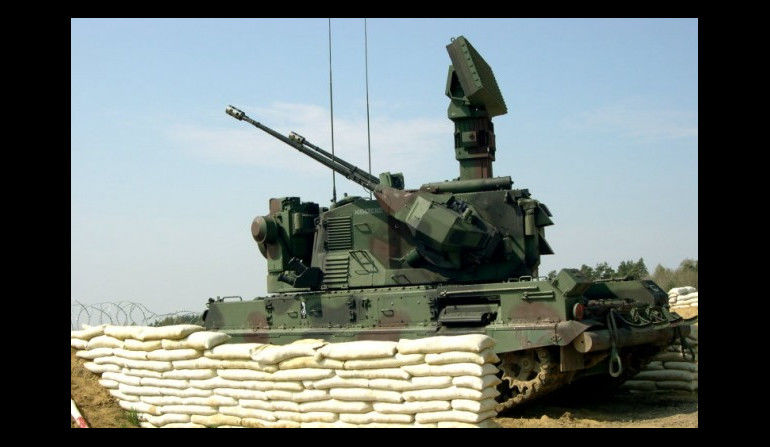
35 mm naval, vessel-borne cannon is being developed, within the framework of a project co-financed by the Treasury, represented by the National Centre for Research and Development, and implemented by a consortium involving the following entities: Military University of Technology (leader), PIT-RADWAR (main systems integrator), ZM Tarnów S.A. and Polish Naval Academy.
In case of the Land Forces, up until now, only trailer-based anti-aircraft systems were being considered, expected to be structured similarly to the Pilica batteries, but employing 35 mm cannons instead. However we also known that operational requirements for the SONA programme have been formulated at the General Staff, including obtaining of an ability to provide direct air-defence protection for the armoured units.
PGZ companies, including PIT-Radwar, also have a great deal of experience gathered in the domain of C2 suites dedicated for the anti-aircraft systems, or integration thereof, implemented through employment of the domestic potential in case of the Blenda, Pilica, Loara or Kobra systems. When it comes to the mobile anti-aircraft systems this is especially important as the industry could play a role of the supplier of the components (platforms, radars, optronics, launchers, cannons, missiles, command system) as well as of an integrator of the whole solution. This would provide Poland with technological sovereignty and increases the export chances.
Decisions are Needed
As we can see, when it comes to the mobile anti aircraft systems that could protect the armoured units of the Army, the Polish Ministry of Defence, as well as the Armed Forces, have not been showing much of an interest, contrary to the situation related to other elements of IADS. Obviously, there is no need so urgent as in case of the operational requirement that defines the Wisła programme, in case of which the formerly used systems have already been withdrawn, however, in case of the VSHORAD systems used to protect the armoured and mechanized elements, no procurement schedule exists, and such plan would allow the industry to draw a specific action plan.
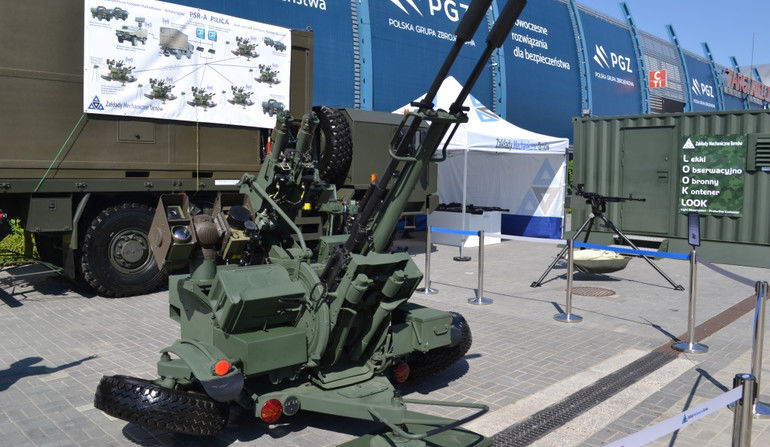
Hence, we do not know whether the effort shall be focused on mobile AAA or on missile-artillery systems. No arrangements have been made with regards to the carrier platform - should it be a wheeled vehicle (Rosomak APC), or should it be a tracked platform, not to mention selection of a specific vehicle (K9, Borsuk or any other vehicle). The main factor that would condition creation of solutions by the industry is, and this shall be done by the Armed Forces, to define, early enough, the requirements, so that enough time remains available to prepare the armament system for production.
If a Polish mobile anti-aircraft system is created, it would be based on the existing solutions, which limits the technology-related risks, involved in a potential R&D programme. It shall also be noted that both Osa, as well as the Biała systems may be used by the Army for some time, which diminishes the drive towards rapid implementation of final solutions, moreover it also provides the industry with time required to create original solutions too.
The issue of the future of the mobile air defence systems in the Polish Army requires at least some decisions to be taken, concerning the directions of development and shape of the prospective systems. This shall be taken into account also due to the fact that in case of such armament, a greater degree of help cannot be provided by other NATO member states. In most cases, those states either got rid of mobile anti-aircraft platforms (based on MBTs or APCs), or the quantity of such systems has been greatly reduced, while cuts reversal would be a long and difficult process. In this domain the Polish Armed Forces will have to handle the problem themselves, and this includes provision of protection for the allied forces within the Polish territory.

